

One of the solutions that enabled students to conduct studies as they were in the classroom was webcam eye tracking. For example, students from Warsaw SWPS University used the RealEye webcam platform to perform their experiments on eye-tracking classes conducted by the Eye Tracking Research Centre. They developed research that provided interesting conclusions even though they did not have face-to-face contact with a teacher or participants.
One of the students shared his perspective after taking part in the classes:
“The first time I dealt with eye tracking was during a class at the university. As part of the course credit, we were to conduct a small study on other students in the year. We were to prepare the whole procedure and examine enough people. The whole subject took place in pandemic times, so the only chance to conduct the experiment was through webcam eye tracking.
Our study was to examine the differences in people’s perceptions of resumes when they were given different tasks. One half of the people were to take on the role of a job taker with typically technical requirements (like a programmer), and the other half were to take on the role of a job taker with a softer approach (like a psychologist). Our artificially prepared resume (with rather truncated content for methodological reasons) was divided into areas of interest. We wanted to see how the distribution of attention would be different for the two positions, and what people surveyed in the two research conditions would pay more attention to. In fact, is education the most important thing when taking on a programmer? And surely a person’s photo on a resume doesn’t influence a test subject’s decision?
Each of the prepared resumes was automatically generated; photos were generated using artificial intelligence, first and last names were drawn from a set of Polish first and last names. Also, interests were randomly assigned to each CV. The results showed that programmers were looked at more in terms of experience and psychologists in terms of soft skills.
After these classes I joined the eye tracking research center and I’m using eye tracking in my research.”
Here are some other examples of the studies conducted as a result of the classes.
The study aimed to check if drawing positive affect in the body from participants translates into preferences for focusing attention on pleasant stimuli. Students assumed that holding a pencil in the mouth as it was in the original version of the facial feedback hypothesis (Strack, 1988) is strong enough to observe its influence on image perception. However, the result showed us that the experimental group had been watching pleasant stimuli for even shorter than the control one. The study was run online by the RealEye site, where participants were divided into two groups and asked to adopt a needed pose (with or without the pencil). Then students showed them pairs of images of pleasant and unpleasant stimuli. Results showed that: Experimental group had a shorter (1834.2s) meantime of looking at positive stimuli than in the control group (2483.7s). There were no significant statistical differences in the meantime of looking at negative stimuli from eye-tracking research. Differences between the length of looking at positive stimuli and the length of looking at stimuli negative within each group were statistically significant.
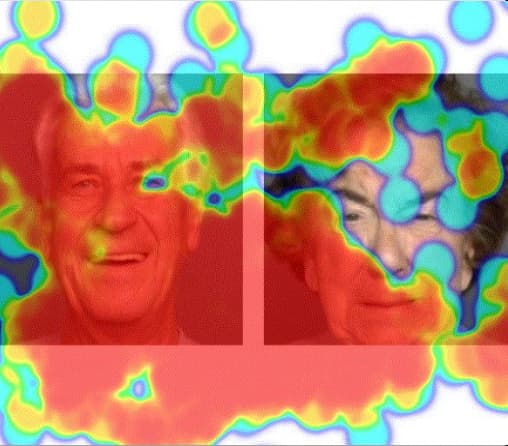
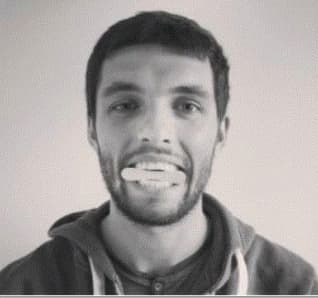
Diet preferences such as veganism and vegetarianism have been extremely popular in the last 5 years. People choose these diet preferences for a variety of personal reasons. Some people may be on a diet for a longer period of time than others and may be better or worse at eliminating undesired products from their list of ingredients, whether it is at the shop, the restaurant, or a social gathering. Students wanted to test: Do vegans and vegetarians skip over ingredients that are against their diet preference, or if they don’t, how much time do they spend looking at unpreferred ingredients? Is it longer than looking at preferred ingredients? Do diets (vegan, vegetarian, and omnivore) influence attention towards certain types of food? Students used RealEye to construct the study design in which they showed participants the series of different meals.
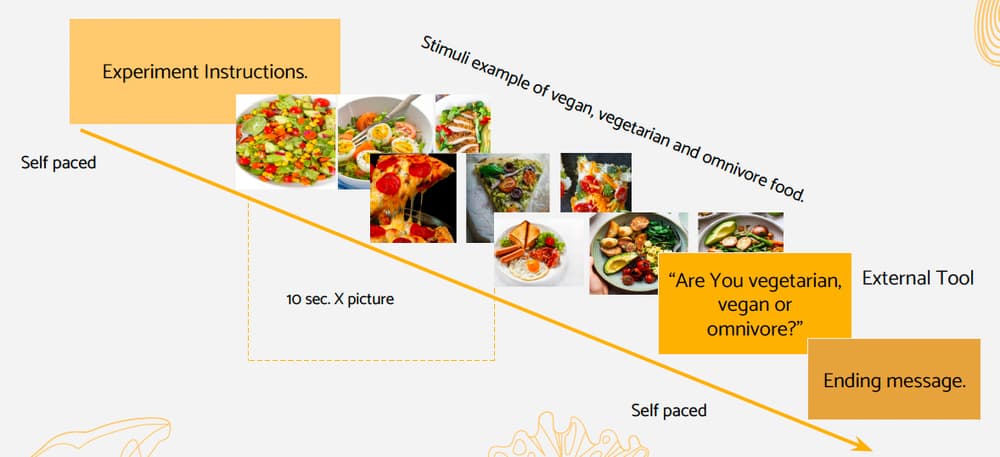
First, eye-tracking results showed that vegans, on average, fixated on vegan food options (salad stimuli) for longer than on vegetarian (0.11 seconds shorter) and omnivore (0.23 seconds shorter) food options. Vegans, on average, fixated on vegan food options (pizza stimuli) for longer than vegetarian (0.05 seconds shorter) and omnivore (0.03 seconds shorter) food options.
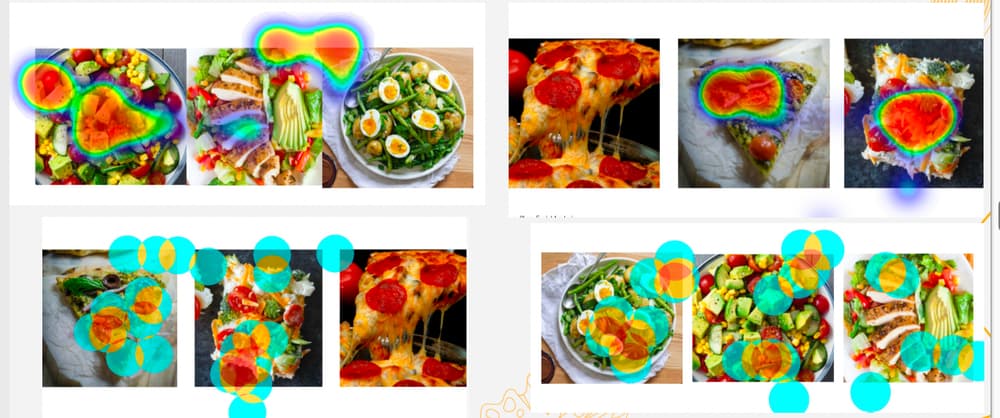
Second, on average, based on eye-tracking results, vegetarians fixated on vegetarian and omnivore food options (salad stimuli) equal amount of time and longer than on vegan food options by 0.01 seconds. Nearly all equal. Vegetarians, on average, fixated on vegetarian food options (pizza stimuli) for longer than vegan (0.07 seconds shorter) and omnivore (0.17 seconds shorter) food options.
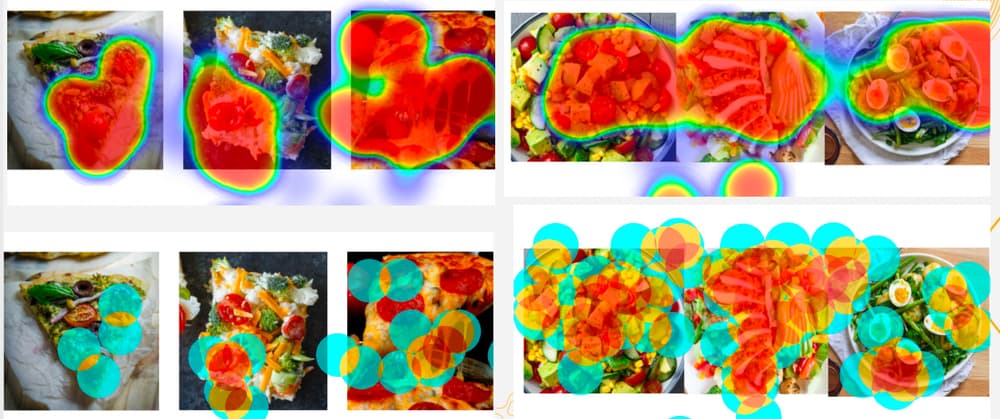
Third, omnivores, on average, fixated on vegetarian food options (salad stimuli) for longer than on vegan (0.04 seconds shorter) and omnivore (0.05 seconds shorter) food options.
Omnivores, on average, fixated on vegan food options (pizza stimuli) for longer than vegetarian (0.06 seconds shorter) and omnivore (0.06 seconds shorter) food options.
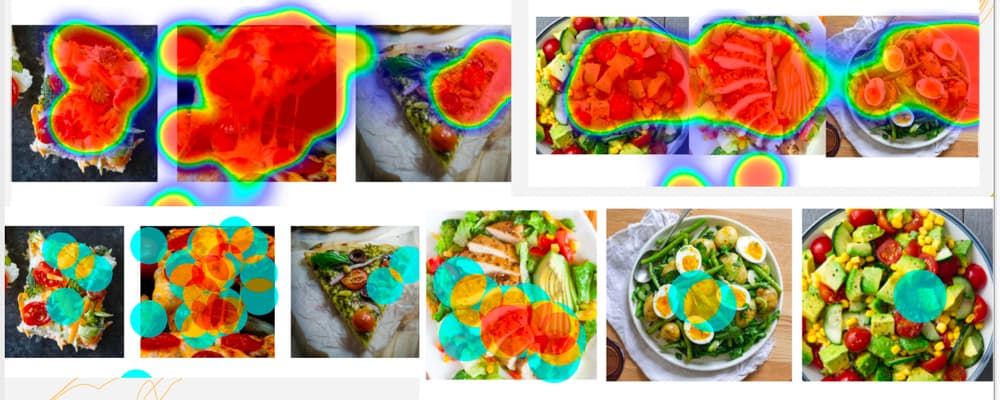
The study aimed to see if the way clothing is presented via the vinted site influences its reception. Visual merchandising, or visual merchandising, sells through the display of goods. Visual merchandising is the presentation of goods in such a way as to attract the attention of potential customers. The way in which the garment is presented influences the customer’s perception through easy free choice and, ultimately, willingness to purchase the product. Products that are easily accessible are more likely to be chosen and bought by the customer. The students wanted to see if the presentation of clothing in the form of a model attracts more attention than other forms of presentation. To do this, they used sample clothing presentations from the Vinted app and showed them to study participants on the RealEye platform. The analysis showed a significantly shorter time to first fixation on the stimulus with the model, from the floor and hanger; significantly more fixations on the stimulus with the model than with the floor and hanger; and significantly more time spent on the stimulus with the model from the floor and hanger. So, selling a garment is worth presenting on a model; this will attract more attention from potential customers.


Proper crime scene identification is very important in an ongoing investigation. That is why it is so important that the observation be effective. Thanks to our own efforts, we are able to achieve progress in the field of interest, for example, by following and analyzing new information, reading books, watching videos or listening to podcasts. The study aimed to see if people interested in the topic of criminal cases would analyze the crime scene more carefully and reliably. The eye tracking studies look for differences in overall gaze patterns when comparing activities performed by experts and novices. An additional point of interest is the potential implementation of visual attention training through the development of gaze patterns. Previous studies comparing experts and trained novices in analyzing and reconstructing events at a crafted crime scene have noted differences in performance and the sequence of noticing relevant stimuli associated with a fictional crime.
The students wanted to see if there was a correlation between the correctness of the task and the occurrence of declared interest in criminal topics. They hypothesized that those declaring an interest would have higher correctness in solving the crime puzzle. Those with an interest in criminal topics would perform longer fixations on areas relevant to solving the task. The subjects were assigned to two groups based on a completed questionnaire on their interest in crime topics: a hobbyist group and a novice group. In the procedure, participants were shown graphics depicting crime scenes containing clues and backgrounds irrelevant to solving the task. They also answered the questions regarding possible crime reasons.
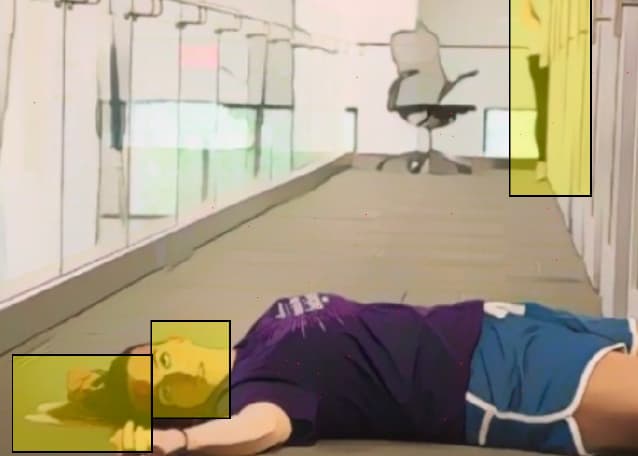
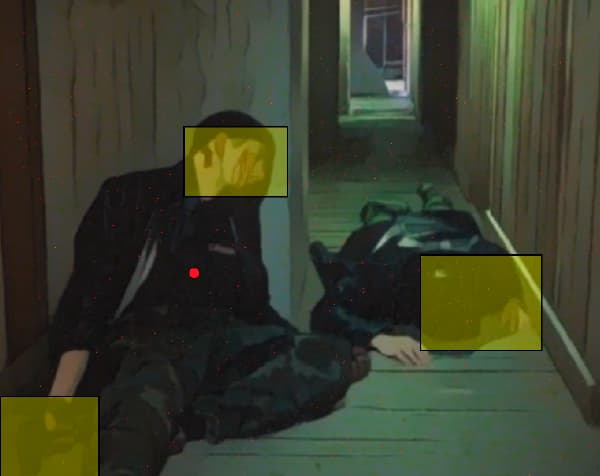
The expert group averaged a score of 12, and the novice group averaged 10.71. The expert group was more accurate in answering questions about the stimuli. In the low-interest group (laypeople), the average eye-tracking based metric fixation length on the stimulus was 256.25 ms, while in the expert group (high-interest), the average was 355.75 ms. The mean number of fixations on the AOI did not differ between groups, both yielding a mean value of 11.45. Therefore, both hypotheses about the expert groups, the first concerning higher performance in solving the task and the second concerning longer fixations, were confirmed.

Studies show that humorous advertisements impact more on the entertainment of the participants than their deep attention to the advertisement and understanding of the content. Persuasion’s impact on consumer purchase intention is higher than the impact of attention. Students wanted to investigate Is the dwell time on the website is longer while seeing a funny advertisement and hypothesized that people keep their gaze for a long time while seeing a funny advertisement on the website. They prepared the procedure in which participants viewed advertisements on the screenshots. They were asked to click on the item they liked. After this, they had to answer questions about seeing or not seeing advertisements during the experiment. Results showed no difference in whether the participants saw a funny, neutral advertisement and no stimuli because the time spent on slides with funny advertisements was: 8.3 and 9.3 s. The time spent on a neutral stimulus was 8.2 and 6.9 s. However, while looking at the number of gazes and a number of fixations, visual attention was directed longer to funny advertisements.
